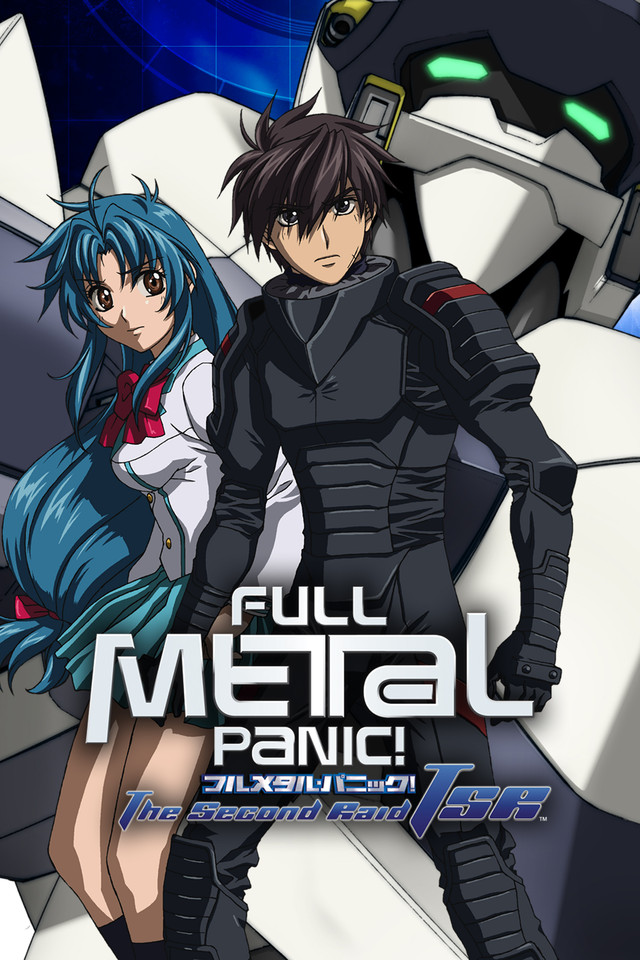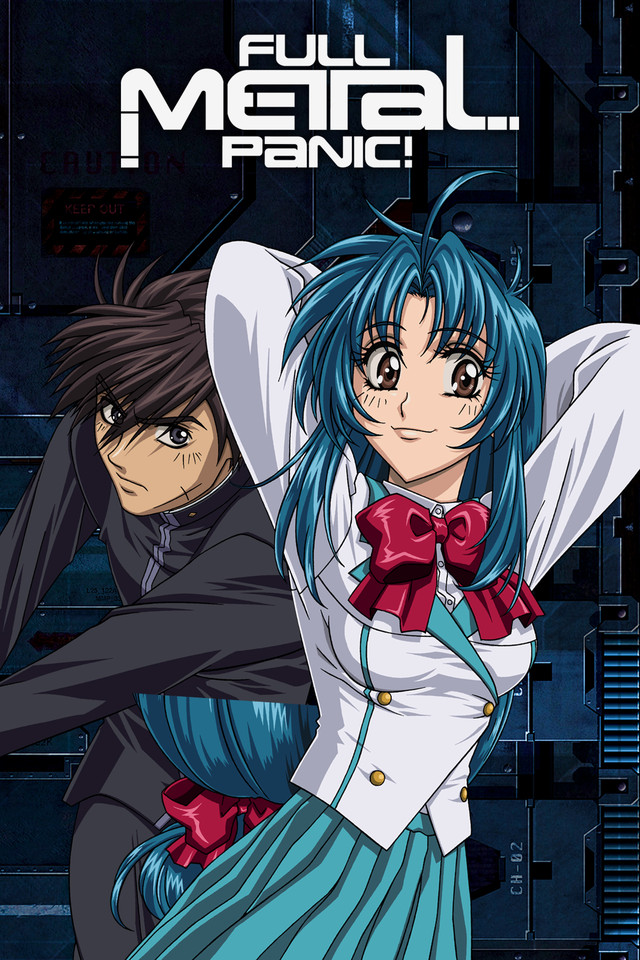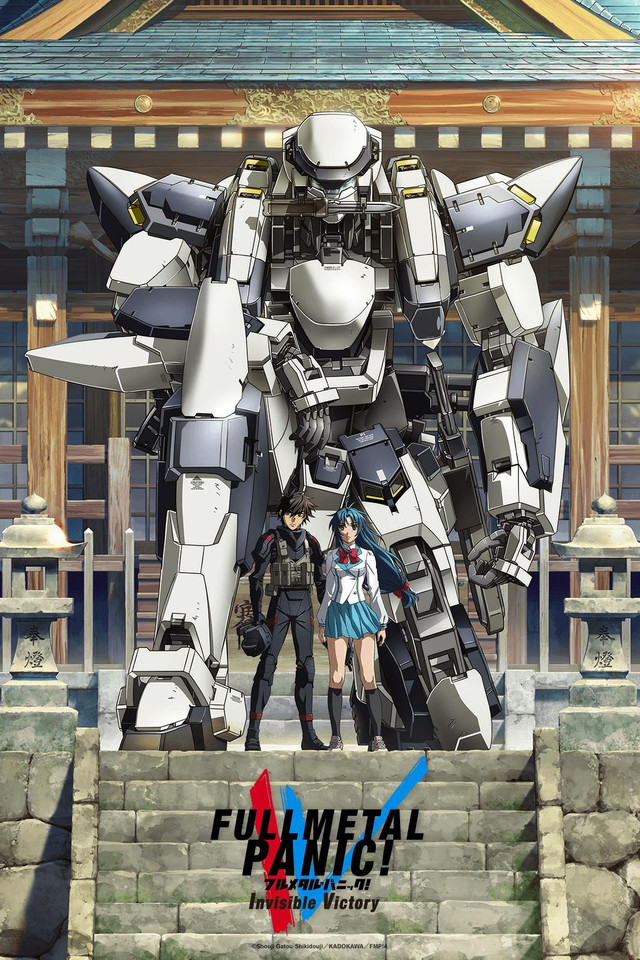Anime-BAW #6: Full Metal Panic!
I had difficulty deciding what direction to take with this post at first because I hadn't seen the fourth season yet and thought about doing a spotlight on Full Metal Panic! as a series. But then I finally did finish the Invisible Victory season..., and realized definitively that a return to Anime-BAW was in order. I've already told you how bad I think the Fumoffu! season is in my Anime-WTF? spin-off series (which is that it's of such sub-atomic consequence to the plot and is so fucking terrible that it might as well not exist at all), so it gets no further consideration here. I only need three seasons or series to do an Anime-BAW, and I have enough to talk about without mentioning it again.
So welcome back to #AniMonday, fellow weebotaks!
Average: Full Metal Panic!--While this first season (a GONZO production) set the tone for the main series going forward and gave the main character history, personal stakes, and a colorful, dynamic supporting cast, its long episode run (twenty-four, as opposed to the more evenly paced thirteen episodes in The Second Raid) lends to many slow periods of exposition and establishment between the moments when the season truly shines. Full Metal Panic! carefully blends high school relationship comedy mechanics with globally scaled military/mecha action plots in a way that has resulted in unpalatable, disjointed nonsense in other series I’ve seen but somehow comes together in perfect harmony in this series. However, the aforementioned pacing issues (necessary to a properly fleshed out inaugural season, mind you) drag Full Metal Panic! down slightly.
Worst: FMP! Invisible Victory--As the title suggests, there is very little positive to be seen in the series' third canonical season, now produced by Studio Xebec. Yes, Invisible Victory once again expands upon the personal stakes (especially regarding submarine captain Testarossa and the two lead characters) and attempts to make the series even more action-focused than in previous seasons. But the CGI (used for everything that isn’t a human being or a static background) is disorienting and terribly integrated into the series’ hand-drawn elements, making this most of this season hard to watch. The mechs look like their running animations were stolen from first season ReBoot and Beast Wars character models, and the car chases look like something from an original Playstation version of Grand Theft Auto. Compounding the uncomfortable watching experience (not as uncomfortable as watching Souske perpetrate acts of terrorism on school property for “comic effect” in the Fumoffu! season, but still…) are the relatively frequent jumps in time and location that serve only to dismember whatever the previous episode’s action-driven momentum promised would come next. The most obvious example of this (skip if you want to avoid SPOILERS) is when Souske is left reeling after his OP mech is hacked to pieces and Kaname gets kidnapped by an omnipresent secret military group led by the captain’s evil twin brother (first introduced near the end of The Second Raid). For reasons that take too long to make any sense, Souske's seemingly immediate response in the next episode is to play Rock’em Sock’em Battlebots in a foreign country and attract the affections of a mech mechanic (who
may or may not have also been a technopathic savant and has the same eye color and tsundere demeanor as his real love interest). But because Invisible Victory is only twelve episodes (half the number of the original season and two less than TSR if you count the OVA), she had to get murdered in front of him to make way for a comedic training montage and a series of coincidental deus-ex machina plot contrivances that led to Souske getting an even more overpowered (and even more poorly rendered and generally badly designed) mech so he can look cool blowing shit up to the effect of nothing really happening beyond “the good guys win for now.” The two leads have actually expressed their feelings for each other by this time, changing Souske’s outlook on his life and what he wants to do with it going forward, which turns him into a single-minded, unstoppable badass (pretty much a Tom Cruise action movie hero, but Japanese) for the majority of the season, which was cool to watch, I guess. Invisible Victory is what I'd call a bridge season. It continues some plot elements of the previous season and sets up for a future season (that I hope is already in the works because when it’s at its best, I love Full Metal Panic! as a series), but is too short to really have much of the substance or impact that previous seasons did, nor did its ending really feel like an ending. All things considered, Invisible Victory is the series’ Worst canonical season by several orders of magnitude.
Worst: FMP! Invisible Victory--As the title suggests, there is very little positive to be seen in the series' third canonical season, now produced by Studio Xebec. Yes, Invisible Victory once again expands upon the personal stakes (especially regarding submarine captain Testarossa and the two lead characters) and attempts to make the series even more action-focused than in previous seasons. But the CGI (used for everything that isn’t a human being or a static background) is disorienting and terribly integrated into the series’ hand-drawn elements, making this most of this season hard to watch. The mechs look like their running animations were stolen from first season ReBoot and Beast Wars character models, and the car chases look like something from an original Playstation version of Grand Theft Auto. Compounding the uncomfortable watching experience (not as uncomfortable as watching Souske perpetrate acts of terrorism on school property for “comic effect” in the Fumoffu! season, but still…) are the relatively frequent jumps in time and location that serve only to dismember whatever the previous episode’s action-driven momentum promised would come next. The most obvious example of this (skip if you want to avoid SPOILERS) is when Souske is left reeling after his OP mech is hacked to pieces and Kaname gets kidnapped by an omnipresent secret military group led by the captain’s evil twin brother (first introduced near the end of The Second Raid). For reasons that take too long to make any sense, Souske's seemingly immediate response in the next episode is to play Rock’em Sock’em Battlebots in a foreign country and attract the affections of a mech mechanic (who
may or may not have also been a technopathic savant and has the same eye color and tsundere demeanor as his real love interest). But because Invisible Victory is only twelve episodes (half the number of the original season and two less than TSR if you count the OVA), she had to get murdered in front of him to make way for a comedic training montage and a series of coincidental deus-ex machina plot contrivances that led to Souske getting an even more overpowered (and even more poorly rendered and generally badly designed) mech so he can look cool blowing shit up to the effect of nothing really happening beyond “the good guys win for now.” The two leads have actually expressed their feelings for each other by this time, changing Souske’s outlook on his life and what he wants to do with it going forward, which turns him into a single-minded, unstoppable badass (pretty much a Tom Cruise action movie hero, but Japanese) for the majority of the season, which was cool to watch, I guess. Invisible Victory is what I'd call a bridge season. It continues some plot elements of the previous season and sets up for a future season (that I hope is already in the works because when it’s at its best, I love Full Metal Panic! as a series), but is too short to really have much of the substance or impact that previous seasons did, nor did its ending really feel like an ending. All things considered, Invisible Victory is the series’ Worst canonical season by several orders of magnitude.







Comments
Post a Comment